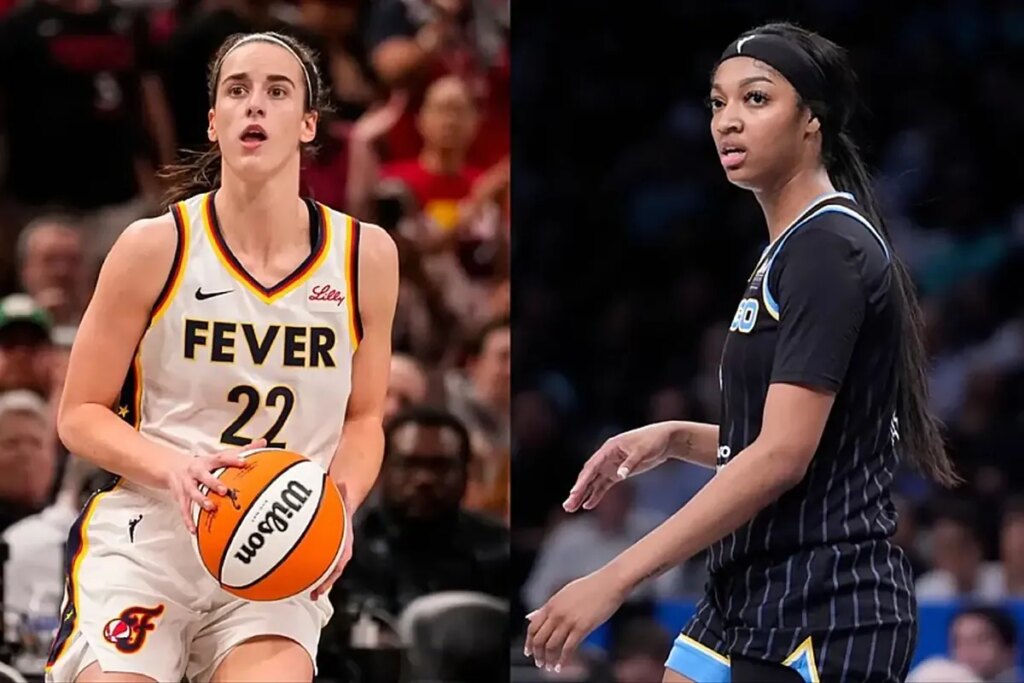When Caitlin Clark and Angel Reese became the faces of the WNBA’s new era, their popularity quickly turned into a driving force for ticket sales, television ratings, and league visibility.
But with both rookies sidelined at various points this season, a new conversation has emerged, one that is less about their play and more about the WNBA’s transparency with injuries.
Clark has missed more than half of the Indiana Fever‘s regular season games, most recently sitting out after a groin injury sustained against the Connecticut Sun.
Reese has also battled physical setbacks, leading to absences that kept fans guessing about her status.
While injuries are an expected part of professional sports, the WNBA’s approach to reporting them has fueled confusion and frustration among its rapidly growing audience.
For weeks, the Fever and the league provided only minimal updates on Clark‘s condition. Fans and journalists were left to speculate, with many learning of her absence just hours before tipoff.
That uncertainty had an immediate effect on ticket sales. Games that would have sold out thanks to Clark‘s presence saw ticket prices plummet, some by as much as 70 percent, when her absence was confirmed at the last minute.
Lack of injury transparency draws scrutiny
The situation with Clark is not isolated. As Reese has sat out for the Chicago Sky, supporters have turned to social media to voice their concerns.
Many feel that teams and the league could be more forthcoming about player injuries, giving fans better information to make decisions about attending games or watching broadcasts.
One frustrated fan wrote, “It’s not that at all. Caitlin Clark is out for the year… They’re trying to hang on by keeping hopes up. But they already know she’s done.”
There is also speculation that the league’s reluctance to provide details is partly business-driven.
With Clark and Reese now the WNBA’s main attractions, maintaining ticket sales and national interest may take priority over total transparency.
Still, some believe the issue is more about medical uncertainty than marketing tactics.
“She has a groin injury. There’s two grades: a pull or a tear. If she had a tear, she’d be out for the season. Right now she has a pull and needs to heal. There’s no timetable for that,” one fan explained.
Others criticized the Fever’s medical staff for listing Clark as “day-to-day” for weeks, suggesting that a more realistic recovery window could have been communicated earlier.
“Don’t confuse the incompetence of the Fever’s medical team with injury reporting. If she had received better care, it wouldn’t be an issue. Yes to better reporting overall, though,” a supporter argued.
A challenge for league credibility and fan trust
As the WNBA’s star power grows, so does the expectation for professionalism off the court.
Inconsistent or last-minute injury updates may damage trust between the league and its fans, especially when tickets and travel are on the line.
The current situation has even led some to question whether the league’s long-term growth could be slowed by the mishandling of injury news.
Despite the criticism, there is still empathy for both the players and the league. Recovery timelines for soft tissue injuries are notoriously difficult to predict, and teams may be prioritizing player health above all.
But with Clark and Reese both facing long recoveries and no firm return dates, the WNBA’s challenge is clear.
For fans eager to see their favorite stars, and for a league seeking to maintain its momentum, the demand for honest, timely updates has never been louder.
If the WNBA hopes to keep building on its recent surge, improved communication around injuries may be just as important as anything that happens on the court.
Read the full article here

